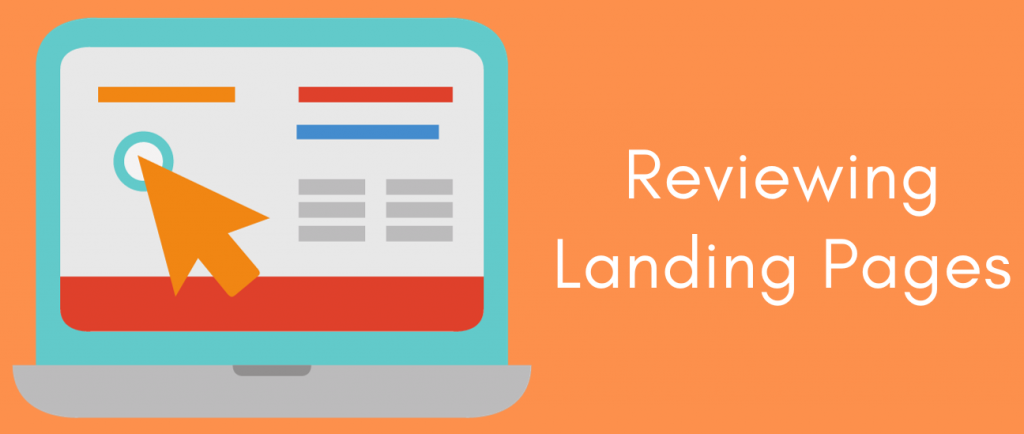Performing a PPC (Pay-Per-Click) audit for your competition is a valuable exercise to gain insights into their strategies, identify strengths and weaknesses, and inform your own PPC strategy.
Why should you spend time reviewing your competitor’s PPC activities?
Conducting competitor PPC analysis is an essential part of optimizing your Google Ads account for several reasons.
“First and foremost, it provides a benchmark for assessing your performance. By comparing your metrics with those of your competitors, you can uncover areas where you may fall short or have a competitive advantage. This awareness empowers you to make well-informed choices regarding your advertising budget and targeting tactics.
Competitor PPC analysis can help you uncover new keyword opportunities. By analyzing the keywords your competitors are bidding on, you can identify gaps in your own keyword strategy and discover new keywords that may be highly effective in reaching your target audience. This can help you expand your reach and increase your chances of converting leads into customers.
Competitor PPC analysis can provide valuable insights into your competitors’ ad copy and messaging. By understanding how they are positioning their products or services, you can fine-tune your own messaging to stand out in the market. This can help you craft compelling ad copy that resonates with your audience and drives higher click-through rates.
Here’s a step-by-step guide on how to conduct a PPC audit for your competitors:
1. Identify Your Main Competitors: Start by defining who your primary competitors are in your industry or niche. These are the businesses that offer similar products or services to yours.

- Conduct Google searches for the keywords and phrases relevant to your business or industry.
- Use keyword research tools like Google’s Keyword Planner to identify which businesses are bidding on the same or similar keywords as you.
- Access the “Auction Insights” report to see who your competitors are for specific campaigns or ad groups.
- Use competitive analysis tools like SEMrush, SpyFu, iSpionage, or AdGooroo o discover your competitors in PPC advertising.
2. Ad Copy Analysis: Examine the ad copy used by your competitors. Look for patterns in messaging, ad extensions, and unique selling propositions (USPs). You must consider the following:
- Are they using compelling ad copy? – Identify what makes your competitors’ products or services unique. Look for the value propositions they highlight in their ad copy.
- Do they include calls to action (CTAs)? – Analyze your competitors’ CTAs to see how they are encouraging users to take action. Look for phrases that create a sense of urgency or offer incentives.
- Are they highlighting promotions or unique offerings? – Understanding what they are proposing can help you craft more effective ad copy that resonates with your audience.
Learn How To Optimize Your Ad Copy in Google Ads?
3. Keyword Analysis: Analyzing your competitors’ keyword strategies is another crucial aspect of competitor PPC analysis. By understanding the keywords your competitors are bidding on, you can identify new opportunities to enhance your own keyword strategy.
- Using keyword research tools can provide insights into the keywords your competitors are ranking for and their estimated search volumes.
- Keep track of any changes in your competitors’ keyword strategies over time. New keywords they target or shifts in focus can reveal evolving tactics.
- Compare your own keyword strategy with your competitors’ strategies. Identify areas where your competitors are targeting keywords that you’re not. These are potential keyword gaps you can explore.
- Use Google’s Keyword Planner to research keywords and see estimated search volumes. You can also explore keyword suggestions based on your competitors’ websites.
4. Ad Extensions: Take note of the ad extensions your competitors are using. Ad extensions can enhance ad visibility and click-through rates. Are your competitors using site link extensions, callout extensions, structured snippet extensions, or others?
Find out how you can Monitor your disapproved ad extensions with Karooya’s Google Ads script
5. Ad Preview & Diagnosis Tool: The Ad Preview Tool allows you to see how your ads appear in different locations and for different devices. Use this to understand how your competitors target specific geographic areas and where your ad stands in comparison to theirs. Use different sets of competitor-related keywords to get a comprehensive view of your competitors’ ad presence. Here are a few things to make a note of:
- Note which competitors consistently appear for specific keywords.
- Observe the ad positions of your competitors in the search results. Are they consistently ranking above or below your ads? Ad positioning can provide insights into their bidding strategy.
- Document your findings and insights from the Ad Preview and Diagnosis Tool. Make notes on competitor strategies, messaging, and any areas where you see opportunities or gaps.
Here’s an interesting read on How to Use Ad Performance Report from Karooya’s Dashboard
6. Use the Auction Insight Report: It provides insights into how your ads are performing compared to your competitors’ ads in Google Ads auctions.
- Identify your main competitors.
- Assess how often you compete directly with specific competitors.
- Understand your ad’s positioning and visibility compared to competitors.
- Adjust your bidding and ad positioning strategies to stay competitive.
Here are the top 5 metrics that you can consider reviewing:
- Impression Share (IS): Analyzing your impression share helps you identify how often you’re missing out on potential ad visibility compared to your competitors.
- Overlap Rate: Understanding your ads’ overlap with competitors reveals the level of competition and guides your strategy for targeting and positioning.
- Position Above Rate: Monitoring your ad’s position above competitors highlights areas where you can improve to secure higher rankings and better visibility.
- Top of Page Rate: Evaluating your top of page rate shows the competition for premium ad placements, allowing you to optimize your bidding and ad quality.
- Outranking Share: Tracking your outranking share against specific competitors informs your strategy for maintaining or improving your competitive edge through bid adjustments and ad optimizations.

7. Landing Page Experience: Conduct Google searches for the keywords you’re targeting in your ad campaigns. Click on the ads of your competitors to visit their landing pages and assess the following:

- Evaluate the relevance and user-friendliness of your competitors’ landing pages by clicking on their ads and assessing the landing page experience.
- Analyze the landing page content to identify the keywords your competitors are targeting. Are these keywords integrated naturally into the content?
- Evaluate the relevance and user-friendliness of your competitors’ landing pages by clicking on their ads and assessing the landing page experience.
- Analyze the landing page content to identify the keywords your competitors are targeting. Are these keywords integrated naturally into the content?
- Check if your competitors are offering special deals, promotions, or discounts on their landing pages. Understanding their pricing strategy can be valuable.
- Look for remarketing and tracking pixels on the landing page. These indicate that your competitors are using retargeting strategies.
8. Continuous Monitoring: Ongoing monitoring is vital in a PPC audit as it enables you to track performance, adapt to changing market conditions, optimize budgets, refine ad strategies, and stay competitive by ensuring your campaigns remain effective and efficient.
Competitors can change their strategies at any time. Continuous monitoring helps you stay aware of their moves, such as bidding wars, ad copy changes, or new keywords they target.
In conclusion, conducting regular PPC audits is not just a recommended practice but a strategic imperative for any digital marketer. It’s the compass that keeps your advertising campaigns on course, ensures budget efficiency, identifies growth opportunities, and ultimately leads to better ROI. By embracing the power of PPC audits, you can navigate the ever-evolving digital landscape with confidence, continually fine-tuning your strategies, and staying ahead of the competition. Remember, in the world of paid advertising, the audit isn’t just a task; it’s your compass for success.
Related Links:







Stop the wasted ad spend. Get more conversions from the same ad budget.
Our customers save over $16 Million per year on Google and Amazon Ads.